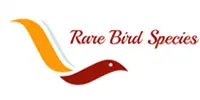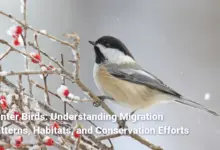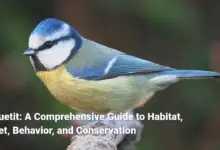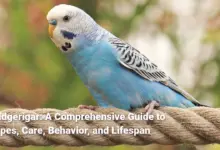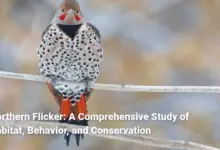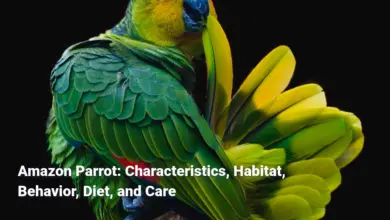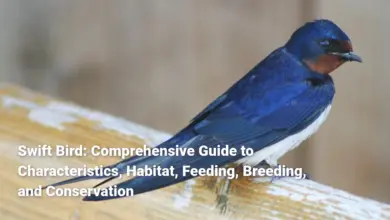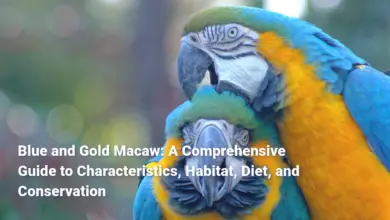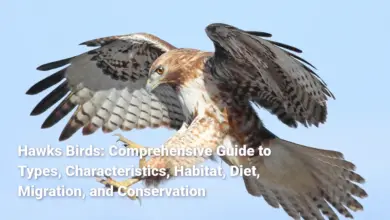Conure Bird: Comprehensive Guide to Characteristics, Behavior, Care, and Popular Species
An In-Depth Exploration of Conure Birds: From Traits and Socialization to Care, Popular Species, and Breeding
Conure Bird: a comprehensive guide
Conures are vibrant and captivating parrots, known for their endearing personalities, striking plumage, and lively behaviors. Despite their small to medium stature, typically ranging from 10 to 20 inches in length, these social birds are large in spirit and heart. Originating from Central and South America, conures belong to the larger family of New World parrots and comprise numerous species, each with distinguishing traits and captivating colors. Their affectionate nature and intelligence make them beloved companions for avian enthusiasts. However, owning a conure involves a commitment to understanding their behaviors, dietary needs, social lives, and potential health concerns.
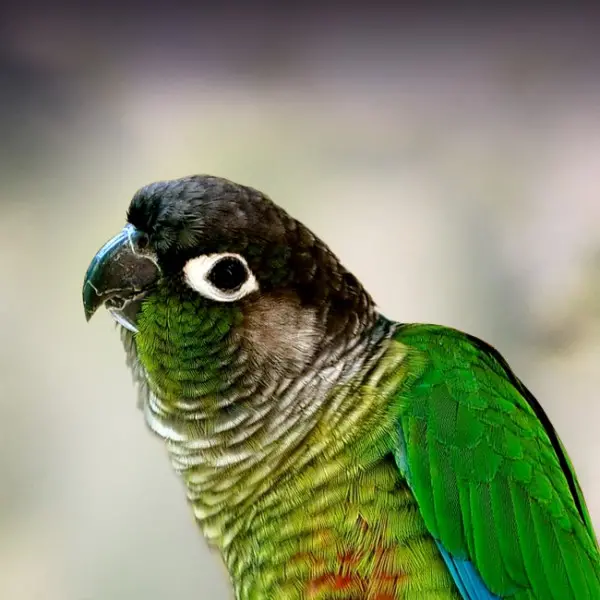
This comprehensive guide delves deep into the characteristics of conure birds, examining their unique qualities, behaviors, needs, and tips for care. From a closer look at their striking appearance to insights into their social traits and typical lifespan, this article aims to equip readers with the knowledge required to provide a healthy, enriching environment for these lively pets. For those considering adopting a conure or expanding their knowledge as current owners, this guide offers thorough information and insightful perspectives on these engaging and colorful companions.
Characteristics of Conure Birds
Conure Birds are a remarkable collection of birds that encompass a wide variety of species, each exhibiting unique traits that captivate both bird lovers and casual observers alike. Their vibrant and colorful plumage echoes that of tropical rainforests, making them visually stunning. Like a canvas painted with the hues of a sunset, conures are adorned with shades ranging from yellows to greens to vibrant reds and blues. As they move, their feathers create an exhilarating display of color in motion, showcasing their energetic demeanor.
In terms of personality, conures are like playful puppies in the bird world. They are known for their friendly and outgoing nature, often seeking interaction with their human companions. These birds are incredibly social and do not thrive in isolation; they require regular mental stimulation and companionship to flourish. Their vocalizations add another layer to their charm, ranging from cheerful chirps to melodic whistles that can echo throughout the home, much like the soundtrack of a lively gathering.
Regardless of their individual species, conures are characterized by a sturdy build with a strong curved beak designed for cracking seeds and nuts. Their long tails and slightly rounded heads give them a distinct appearance, and their large expressive eyes convey curiosity and intelligence. The social nature of these birds, combined with their bright colors and engaging personalities, truly makes them one of nature’s most delightful creations.
Size and appearance of Conure Birds
Conure Birds display a captivating array of sizes and appearances, drawing attention not only for their physical attributes but also for their dynamic personalities. They typically range from 10 to 20 inches in length, depending on the species, and weigh anywhere between 4 to 12 ounces. This size variance creates a diverse assortment of characteristics among different conures, from the petite Green-Cheeked Conure to the larger Sun Conure, celebrating the beauty of avian diversity.
In terms of appearance, Conure Birds have a compact body structure with a robust build. Their wings are long and slightly pointed, allowing for agile flight and playful aerobatics. Their feathers, which can be a dazzling combination of multiple colors, offer clues to their origins and habitats. For example, the Sun Conure features a bright yellow body accentuated with orange cheeks and green wings, while the Green-Cheeked Conure showcases a primarily green silhouette adorned with hints of crimson on its tail.
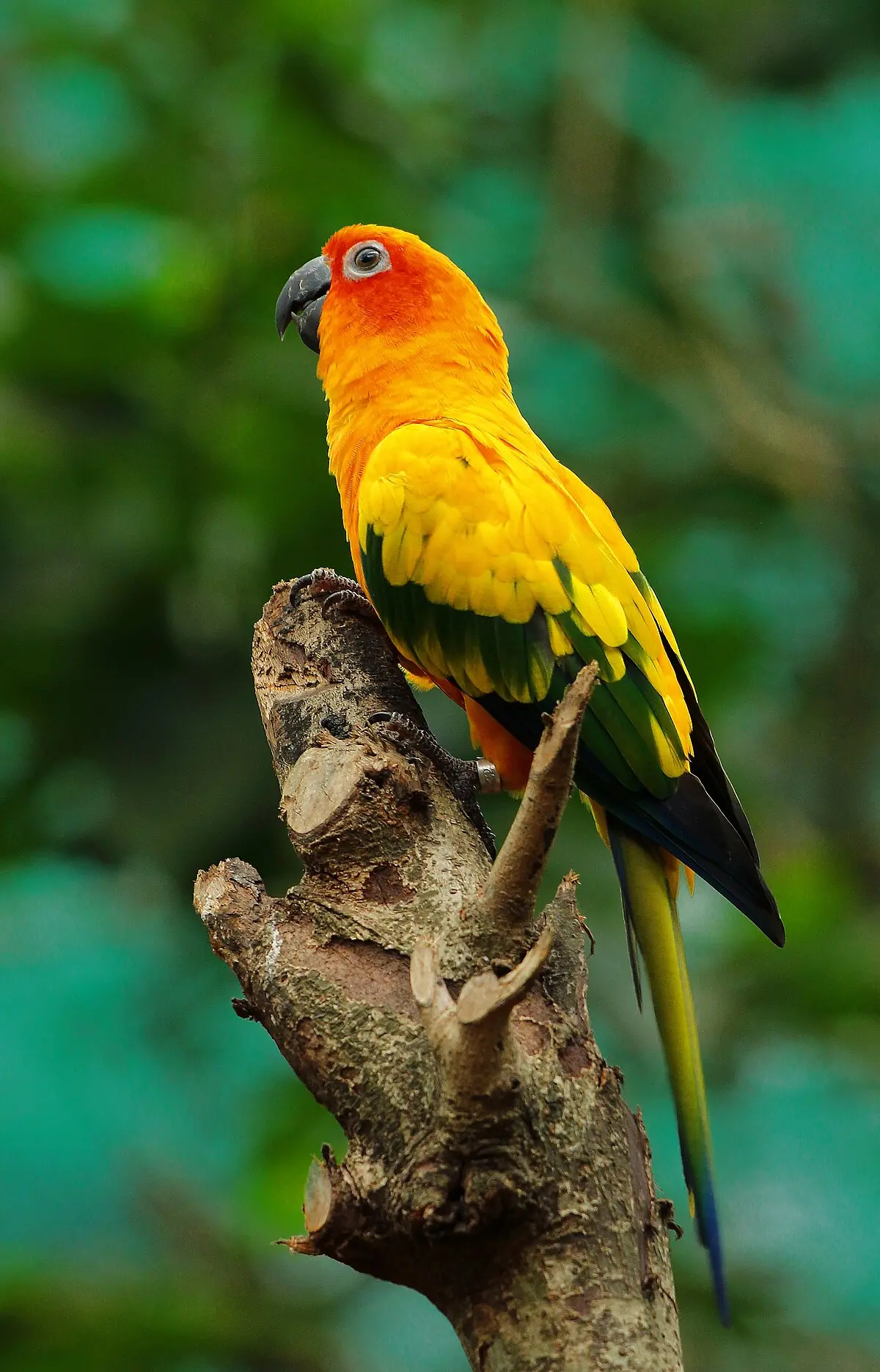
Understanding the size and appearance of conures goes beyond just aesthetics; it informs potential owners about habitat requirements, dietary needs, and personality traits. The larger the conure, the more space and companionship they may require, while smaller species may be more adaptable to close living quarters. As such, providing the correct environment for the specific type of conure is essential for promoting their health and happiness. A well-cared-for conure not only shines in appearance but also manifests a sparkling personality, which itself becomes the centerpiece of any loving home.
Color variations in Conure Bird species
One of the most enchanting aspects of Conure Birds is their remarkable color variations. Each species exhibits unique feather coloration and, among domesticated conures, a host of breeding mutations has been developed to enhance or alter their appearance. For instance, the spectrum of colors can remind one of a painter’s palette, displaying nature’s creative prowess.
- Green-Cheeked Conure (Pyrrhura molinae): Its feathers predominantly feature rich green plumage interspersed with red on the tail and dark marks on the face. Breeding has led to stunning mutations, such as the turquoise and pineapple varieties, which introduce shades of blue and vibrant yellows into the mix.
- Sun Conure (Aratinga solstitialis): This bird boasts striking yellow and orange plumage with hints of green on its wings. The Sun Conure captivates with its lively colors, resembling a sunbeam breaking through the clouds on a bright day.
- Cherry-Headed Conure (Aratinga erythrogenys): A striking visual note is its bright red head juxtaposed against lush green body, further complemented by yellow on the wings and belly.
- Jenday Conure (Aratinga jandaya): This species resembles the Sun Conure in color but features more pronounced green wings and back, providing a beautiful contrast to its golden-yellow plumage.
- Nanday Conure (Aratinga nenday): The unique combination of a black head with green body and blue-tipped wings offers a dramatic flair, making it distinct among conure aficionados.
Across these colorful varieties, conure enthusiasts are often drawn to specific colors or adaptations, whether for aesthetic reasons or personality matches. The vibrant feather displays serve not only as an attractive feature but also as an expression of the unique individuality found among each conure species.
Lifespan of Conure Birds
Caring for a conure involves understanding that these vibrant birds can be long-lived companions. Typically, Conure Birds have a lifespan that varies significantly depending on species, care, and living conditions. Interestingly, the more tender attention and proper veterinary care they receive, the longer they may thrive and bring joy to their owners.
- Captive Lifespan: On average, conures can live between 20 to 30 years in captivity, with some species like the Sun Conure reaching up to 30 years or longer when provided with exceptional care. This longevity is often attributed to regular veterinary check-ups, proper diet, and a stimulating environment.
- Wild Lifespan: In contrast, wild conures tend to experience shorter lives due to exposure to predators, diseases, and food scarcity. The average lifespan for wild conure species ranges around 10 to 20 years, largely due to these risks.
Owners are encouraged to commit to proactive care, including nutrition, environmental enrichment, and health monitoring, to ensure a happy and fulfilling life for their conures. Just as nurturing a young sapling can guide it toward becoming a mighty tree, providing love and resources for a conure will foster a resilient and enduring bond between owner and bird.
Behavior and socialization
Recognizing the behavioral traits and socialization needs of Conure Birds is key to fostering a fulfilling companionship between avian and human. Conures are inherently social creatures, resembling small, vivacious individuals in a bustling community, thriving on interaction and engagement. Their playful demeanor and affectionate nature make them not just pets but integral members of the family.
- Natural Flock Dynamics: In the wild, conures live in large flocks, where social structures are formed, and interactions are common. This instinctive behavior continues when in captivity, revealing their need to connect. Whether through vocal communication or physical interaction, it is essential for owners to regularly spend time bonding with their conures.
- Vocalizations: One of the standout features of conure communication is their vocal ability. They can produce a range of sounds from soft chirps indicative of contentment to loud squawks signifying excitement or distress. Captive conures often mimic tones and sounds they hear regularly, showcasing their intelligence and adaptability.
- Exploration and Play: Conures are playful and curious, eager to explore their surroundings much like a child discovering a new playground. Providing safe toys, climbing structures, and engaging activities is crucial to keeping them entertained and preventing behavioral issues that stem from boredom.
In summary, Conure Birds thrive in environments where they are included in family activities, receive ample attention, and engage in social interactions. These birds do exceptionally well when there is a high level of engagement and care, thus enhancing both their well-being and the joy they provide their owners.
Social traits of Conure Birds
Conure Birds are equated with strong social ties and energetic personalities, akin to the vibrancy of a lively gathering in full swing. Understanding their social traits is key to nurturing their emotional health and happiness.
- Interactive Behavior: Conures are notoriously friendly, often seeking out their human companions for interaction and companionship. They enjoy being held, cuddled, and talked to, reflecting their need for strong bonds with those around them. Conures that receive regular attention often become more affectionate and trusting, much like children who thrive on parental engagement.
- Affection Display: These birds often exhibit signs of affection by preening their owners or snuggling against them. This behavior is essential for forming strong bonds and signifies that your conure feels safe and loved in your presence.
- Playful Companionship: Just as a child finds excitement in playing games and being around friends, conures revel in participating in family activities. These birds appreciate toys that challenge their intellect and physical abilities, such as puzzle feeders or ropes for climbing.
As social beings, conures require a significant amount of attention and interaction. They thrive in environments that emphasize companionship and play, ensuring their happiness and a fulfilling bird-owner relationship.
Communication styles in Conure Birds
Conure Birds are not just colorful and playful; they are also expressive communicators, adept at displaying their feelings and needs through varied vocalization styles and body language much like a rich tapestry where each thread adds to the overall picture.
- Vocal Range: Conures display a wide range of vocalizations, each carrying a specific meaning. They engage in cheerful chattering when excited and may emit loud squawks during playtime or when seeking attention. Understanding these sounds is essential for interpreting their emotional states, and it often strengthens the bond between owner and bird.
- Body Language: Body posture significantly contributes to their communication. A puffed-up chest may indicate defense or aggression, while a relaxed stance suggests contentment. Observing the positioning of their wings, tail, and head can reveal how your conure is feeling at any given moment.
- Socializing and Bonding: Interaction is crucial for enhancing communication between conures and their human companions. Engaging with your bird during playtime helps them learn to communicate effectively and reinforces a sense of security and trust. Conures often respond positively to imitative sounds made by their owners, recognizing a form of social bonding.
Through understanding their unique communication styles, conure owners can foster deeper connections with their feathered friends, leading to a more enriching and fulfilling pet ownership experience.
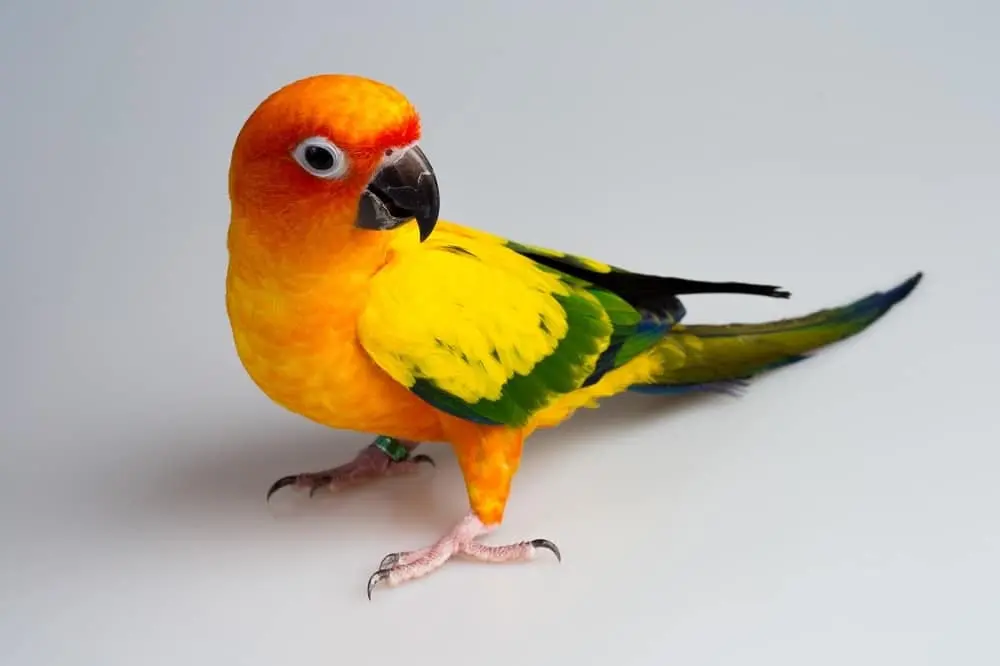
Playfulness and exercise needs of Conure Birds
Conure Birds, akin to energetic children, exhibit a playful spirit that drives them to explore their surroundings and engage in active play. Their exercise needs must be met to promote both mental stimulation and physical health, forging a vibrant and joyful life for these colorful parrots.
- Active Playtime: Regular playtime is essential for conures, allowing them to expend energy and satisfy their inquisitive natures. Providing a safe space outside their cages, complemented by toys like swings, climbing structures, and foraging games, is crucial. Just as a child delights in a day full of games, conures yearn for exploration and activity to keep their hearts and minds engaged.
- Daily Exercise: To maintain a healthy weight and prevent boredom-related issues, it is generally recommended that conures have a minimum of 2 to 4 hours of supervised out-of-cage time each day. This direct interaction not only strengthens bonds but also encourages regular movement and agility, replicating their natural behaviors as they fly and forage in the wild.
- Mental Challenges: Conures require mental stimulation as much as physical exercise. Engaging toys designed for puzzles or foraging can keep their minds sharp and entertained. Introducing new and varied toys periodically can prevent boredom and encourage exploration, keeping them mentally active.
Conure Birds exemplify a vibrant zest for life. Providing ample opportunities for play, physical exercise, and mental enrichment is vital to nurturing their energetic personalities, ultimately leading to a happy and healthy bird companion.
Care and maintenance
Caring for Conure Birds extends beyond providing food and shelter; it necessitates a comprehensive understanding of their daily needs, environment, and health maintenance. These engaging birds require an environment that reflects their social and physical requirements to thrive.
Feeding requirements for Conure Birds
Understanding the dietary needs of Conure Birds is crucial for ensuring their long-term health and well-being. These birds thrive on a balanced diet that replicates their natural feeding habits, which consist of varied ingredients, mirroring the diverse diet they would typically forage in the wild.
- Pelleted Diet: The foundation of a conure’s diet should comprise high-quality pellets, accounting for about 55% to 70% of their overall intake. Pellets provide essential nutrients, avoiding the deficiencies that can result from a seed-only diet.
- Fresh Fruits and Vegetables: Supplementing the pelleted diet with fresh fruits and vegetables is essential. Consider incorporating safe food options, such as apples, carrots, leafy greens, bell peppers, and sweet potatoes. Presenting a colorful variety benefits their health, similar to how a diverse diet nourishes individuals.
- Nuts and Seeds: While nuts and seeds are enjoyed by conures, they should be offered sparingly due to their high-fat content. Providing these as occasional treats can promote healthy habits without tipping dietary balances.
- Water Intake: Clean, fresh water should always be accessible. Changing the water daily and ensuring that it remains free of contaminants is crucial for maintaining hydration and overall health.
Understanding these dietary requirements reflects the commitment necessary to maintain the health and vitality of your beloved conure. Just as a balanced diet contributes to human health, providing the right nutrition sets the stage for a thriving feathered friend.
Cage setup and environment needs
Creating an appropriate living environment for Conure Birds is essential to support their active lifestyles and social needs. The cage should be a sanctuary that reflects the bird’s natural habitat, allowing for freedom of movement, mental stimulation, and comfort.
- Cage Size: Conures need spacious accommodations, with a recommended minimum size of 24 inches in width, height, and depth. Many owners opt for larger cages with dimensions of at least 36 inches long by 24 inches wide to facilitate exploratory and playful behaviors.
- Cage Arrangement: Within the cage, perches of varying diameters and materials are essential for foot health and mental stimulation. Perches should be placed at different heights, and toys should be frequently rotated to encourage exploration.
- Environmental Enrichment: Toys that promote play, such as climbing structures, shreddable materials, and foraging games, should populate the cage. These not only entertain conures but also challenge them, mimicking natural behaviors found in the wild.
- Location and Cleaning: Avoid placing cages in areas that experience drafts or direct sunlight, as conures are sensitive to temperature extremes. Ensuring cages are cleaned daily and thoroughly regularly helps prevent health issues related to hygiene and pests.
Creating a nurturing environment for your conure is akin to providing a vibrant, engaging habitat that allows them to thrive as individuals. The love and attention dedicated to their living space reflect their importance as cherished companions.
Health issues common in Conure Birds
Conure Birds are generally robust birds, but they may encounter specific health issues primarily due to environmental stressors, dietary insufficiencies, or improper care. Awareness of common health concerns is crucial for maintaining a healthy conure.
- Nutritional Deficiencies: An imbalanced diet can lead to health problems such as feather plucking, lethargy, or developmental issues. Ensuring a varied diet, rich in nutrients, is vital for avoiding deficiencies.
- Respiratory Issues: Conures are susceptible to respiratory infections, often stemming from drafts, irritants, or poor hygiene in their environment. Owners should practice good sanitation and avoid exposure to toxic fumes, such as those from cooking.
- Feather Destructive Behavior: Feather plucking and self-mutilation often result from stress, boredom, or unmet needs. Providing mental and physical enrichment can mitigate these behaviors, ensuring the conure’s emotional well-being.
- Psittacosis: Often referred to as parrot fever, this bacterial infection can pose serious health risks. Regular veterinary check-ups are essential, as is proper quarantining of new birds to prevent the spread of infections.
- Obesity: Overfeeding or providing high-fat diets can lead to obesity, which impacts mobility and overall health. Watching portion sizes and encouraging exercise through active play is fundamental to preventing obesity.
Keeping a vigilant eye on your conure’s health and behaviors is essential in maintaining their quality of life. Prompt attention to any changes in behavior or appearance helps to address potential issues before they escalate, ensuring a long, healthy, and joyful companionship.
Training Conure Birds
Training Conure Birds is a delightful and rewarding journey that enhances the bond between bird and owner. These intelligent creatures possess not only the capability to learn commands, but they also thrive on interaction and social engagement, making the training process an enjoyable experience.
Basic commands for training Conure Birds
Effective training begins with teaching basic commands, which lay the groundwork for communication between conure and owner.
- Step Up: Teaching your conure to “step up” is often the first command to tackle. Present your finger gently against your bird’s chest and say “step up.” Reward your conure with a treat when it moves onto your hand, reinforcing positive behavior.
- Turn Around: This fun command can be taught by using a treat. Move the treat in a circular motion, guiding the bird to follow. Award the conure when it successfully completes the circle, reinforcing its behavior with rewards.
- Wave: A charming trick involves teaching your conure to wave. Hold a treat above its head, encouraging the bird to lift its foot. By gently guiding the foot into a waving motion and rewarding upon success, you engage their natural curiosity.
- Target Training: Offer a target stick for your conure to touch. Start by presenting the stick close to its beak and rewarding any attempt to touch it. Gradually increase the distance, reinforcing the behavior with treats.
By keeping training sessions short, fun, and filled with positive reinforcement, owners can help their conures learn commands effectively while maintaining their enthusiasm and love for training.
Socialization techniques for young Conure Birds
Socializing young Conure Birds is crucial to developing their social skills and promoting a trusting relationship with humans while fostering a sense of security. Here are several techniques to enhance young conure’s socialization:
- Early Handling: Introduce handling early, speaking softly to the conure to create positive associations with your presence. The more frequently the bird interacts positively, the stronger the bond it will develop with its owner.
- Gradual Exposure: Gently expose your conure to new environments, people, and even sounds to prevent overwhelming them. Gradual exposure develops adaptability and confidence in handling different stimuli.
- Structured Routines: Establishing a daily routine gives young conures stability, helping them adapt to new situations while reducing anxiety. Including interactions, playtime, and quiet time in their day adds structure.
- Positive Reinforcement: Encourage desirable behaviors by rewarding your young conure during social interactions and experiences. This method solidifies their behavior through positive outcomes, reinforcing trust.
- Supervised Introductions: While introducing your conure to new people, remain observant to ensure a positive experience. Start with one person at a time to avoid overwhelming the bird.
Implementing these socialization techniques lays the groundwork for a well-adjusted and confident adult conure. Taking the time to develop their social skills will create a harmonious bond with their owner.
Addressing behavioral problems in Conure Birds
Addressing behavioral problems in Conure Birds requires patience and understanding. Recognizing potential triggers and employing positive reinforcement techniques can effectively modify unwanted behaviors.
- Identifying Triggers: Understanding what prompts negative behaviors such as fear or territoriality enables owners to manage these situations more effectively. Carefully monitoring their environment helps prevent unnecessary stress.
- Positive Reinforcement: Consistently rewarding your conure for good behavior builds a foundation for positive engagement. Using treats or affection as rewards helps the bird associate desirable actions with positive outcomes.
- Redirecting Behavior: When undesirable behavior occurs, redirect the conure’s attention towards engaging toys or enrichment activities instead of punishing them. This approach encourages mental activity and substitutes negative actions with constructive ones.
- Establishing Boundaries: Set clear behavioral boundaries with gentle but firm commands. Avoiding physical punishment is essential, as it may lead to fear-based responses rather than constructive behaviors.
- Monitoring Health and Diet: Behavioral issues can stem from health concerns or dietary deficiencies. Ensure a balanced diet and regular check-ups to maintain the bird’s overall health.
A compassionate perspective and proactive approach to addressing behavioral challenges are vital for fostering trust and a strong bond between conures and their owners.
Popular Conure Bird species
When considering Conure Birds as pets, several popular species are well-loved for their unique personalities, striking appearances, and social traits. Among these, three standout types consistently capture the hearts of bird lovers.
Sun conure: characteristics and care
A true star among Conure Birds, the Sun Conure (Aratinga solstitialis) is noted for its stunning plumage and vibrant personality. These birds are characterized by their predominantly bright yellow feathers, decorated with orange and green accents that embody the spirit of sunshine.
- Size and Lifespan: Sun conures measure approximately 12 inches in length and can live between 15 to 30 years in captivity, depending on care.
- Dietary Needs: A balanced diet for Sun Conures comprises high-quality pellets, fresh fruits, and vegetables. Foods like carrots, apples, and leafy greens are great choices. Avoiding toxic foods such as chocolate and avocados is crucial.
- Social Interaction: Sun Conures thrive on social engagement and require ample love, attention, and stimulation. Regular interaction fosters healthy relationships and keeps them emotionally satisfied.
- Health Care: Regular veterinary check-ups are necessary to monitor their health. Common health issues include feather plucking and nutritional deficiencies. Being vigilant about diet can help avoid these problems.
The Sun Conure is a splash of sunshine in any home, offering companionship that radiates joy and affection, making it a popular choice for families.
Green-cheeked conure: overview and needs
The Green-Cheeked Conure (Pyrrhura molinae) is renowned for its playful demeanor and charming personality, making these engaging birds particularly appealing for pet owners.
- Appearance: Typically measuring around 10 inches in length, Green-Cheeked Conures feature a primarily green body with red accents on the tail and grey markings on the chest. Their variety of color mutations enhances their appeal.
- Diet: A balanced diet consisting of high-quality pellets, fresh fruits, and vegetables is vital for their health. They enjoy foods like berries, carrots, and leafy greens.
- Social Needs: These conures are very social and enjoy spending quality time with their owners. Ensuring daily interaction is essential to prevent loneliness.
- Exercise Requirements: Active and playful, they require ample time outside their cages for physical exercise and mental stimulation. Interactive playtime is necessary to keep them happy and healthy.
The Green-Cheeked Conure dazzles with its engaging behavior and affectionate personality, making it an ideal companion for bird lovers seeking a vibrant pet in a smaller package.
Nanday conure: traits and temperament
Known for its unique appearance and lively nature, the Nanday Conure (Aratinga nenday) is another popular choice for bird enthusiasts.
- Distinctive Appearance: The Nanday Conure is characterized by its black head, green body, and orange-yellow hues on the chest. These birds typically reach a length of about 11 to 12 inches.
- Intelligence and Playfulness: They are quick learners, often able to mimic sounds and phrases. Their playful nature encourages interactive play and mental challenges.
- Feeding Requirements: Like other conures, a diet rich in pellets, fruits, and vegetables is essential. Commonly enjoyed foods include peas, apples, and nuts, which can serve as healthy treats.
- Socialization: Outgoing and social, Nanday Conures appreciate interaction with their owners and thrive in environments with sufficient mental stimulation and companionship.
The Nanday Conure’s exuberant personality and playful demeanor make it an appealing option for anyone seeking an engaging and interactive companion in the world of pet birds.
In summary, each of these conure species offers unique personality traits and visual appeal, captivating bird enthusiasts and providing joyful companionship. Understanding the specific needs of your chosen conure will enhance their care experience, resulting in a meaningful and enriching bond.
Breeding Conure Birds
Breeding Conure Birds requires a comprehensive understanding of their mating habits and environmental preferences. If done correctly, it can yield healthy offspring and strengthen the lineage of specific conure species.
Mating habits and nesting preferences
- Sexual Maturity: Conures typically reach sexual maturity between 1 to 2 years of age, with larger species maturing later. Recognizing mating behaviors is crucial when determining readiness.
- Courtship Rituals: Males often engage in exciting courtship behaviors, including vocalizations and presenting food to attract females. In contrast, females exhibit nesting behavior by shredding materials and arranging nests, signaling readiness for mating.
- Nesting Boxes: Providing appropriate nesting boxes is fundamental to successful breeding. Nesting boxes should be around 12 inches square and 18 inches deep, offering ample space for comfort and safety.
- Nesting Materials: Providing soft nesting materials, such as shredded paper or wood shavings, encourages nesting behavior. Offering various materials allows the birds the opportunity to select their preferred options for comfort.
- Temperature and Conditions: Maintaining a warm, stable environment with ideal temperature ranges of 75°F to 85°F and humidity levels around 50-60% fosters breeding success.
By understanding these aspects, breeders can facilitate a conducive environment leading to successful mating and healthy chicks.
Raising conure chicks: a guide
Raising conure chicks is an exhilarating journey that requires knowledge, dedication, and care to ensure healthy development.
- Incubation and Hatching: After the female lays eggs, the incubation period lasts around 24 to 28 days during which both parents monitor their nest closely, maintaining temperature and humidity.
- Nutritional Care: Once the chicks hatch, they need consistent feeding from their parents, primarily consisting of regurgitated food. It’s essential that the parent birds have a high-quality diet during this time.
- Monitoring Growth: Keep a close eye on the chicks for signs of healthy growth and development. Typically, conure chicks will fledge between 6 and 8 weeks, beginning to explore their surroundings and learn to fly.
- Weaning Process: Starting around 8 to 10 weeks, chicks begin to wean, transitioning from regurgitated food to solid options. It’s critical to provide a nutritious and balanced diet during this time to support their growth.
- Socialization: After weaning, take measures to socialize the young conures with human interaction. Early exposure to people and the environment promotes confidence and adaptability in their future interactions.
This stage in a conure’s lifecycle is vital, and proper care during this formative period ensures healthier birds that are well-adjusted to their future homes.
Genetic considerations in Conure Bird breeding
Considering genetics during the breeding process is fundamental to producing healthy, vibrant offspring and maintaining desirable traits in conure species.
- Breeding Pairs: Selecting breeding pairs with complementary traits is crucial in fostering desirable outcomes based on genetics. Avoiding inbreeding and genetic defects should always be a key consideration.
- Health Screening: Conduct health screenings for both breeding birds to identify potential hereditary issues that can impact offspring and avoid passing along genetic conditions.
- Monitoring Mutations: Breeders should be aware of various color mutations and their impact on health and behavior. Selecting compatible mutations can maintain genetic diversity while also highlighting desirable aesthetics.
- Size and Behavior Variances: Understanding the behavioral traits that can be passed down is essential. Not all conure species exhibit the same temperament, so selecting pairs with compatibility may lead to desirable behaviors in the offspring.
- Developmental Impact: Monitoring the growth and behavior of newly hatched chicks provides insights into genetic influences, helping breeders refine their practices over time.
By taking these genetic considerations into account, breeders can ensure a successful and responsible breeding program, producing healthy, vibrant conures that will thrive in loving homes.
Conures in the wild
Understanding the natural behaviors and habitats of Conure Birds in the wild can provide valuable insights for those caring for these captivating birds. Observing their behavior in their natural settings reveals the complexities and enriching experiences these birds undergo daily.
Natural habitat of Conure Birds
Conure Birds flourish in a variety of natural habitats throughout Central and South America. From lush rainforests to arid savannas, these adaptable birds prefer tree-rich areas, where they can forage for food and nest safely. The following outlines their preferences:
- Forests: Conures are primarily found in subtropical and tropical forests, where they can enjoy the diversity of fruits, seeds, and nuts that these ecosystems offer. The Amazon rainforest, in particular, serves as a rich feeding ground.
- Savanna Regions: Certain species thrive in open savanna regions, where tree patches provide nesting sites amidst tall grasses, allowing for easy access to food sources.
- Altitude Adaptation: Many conures are adept at living in varying altitudinal ranges, with some species residing in mountainous regions. This adaptation showcases their versatility in locating nourishment and safe habitats.
- Nesting Preferences: Conures naturally seek tree cavities to nest in, highlighting their reliance on trees not just for food but also for safety. They prefer elevated nests to protect their eggs and chicks from ground predators.
By understanding the significance of their habitats, owners can better replicate the environmental conditions necessary for their well-being.
Diet in the wild vs. domestic care
The dietary habits of Conure Birds vary significantly between their wild habitats and domestic care settings. Awareness of these variations can be vital for maintaining a healthy pet.
- Wild Diet: In the wild, conures feast on a diverse selection of fruits, seeds, nuts, and even flowers and nectar. For instance, the Green-Cheeked Conure often enjoys juicy tropical fruits such as mangoes and papayas, showcasing their reliance on natural food sources.
- Domestic Diet: In captivity, a balanced diet consisting of high-quality pellets, fresh produce, and occasional treats mimics true dietary habits. Pet owners should ensure the diet offers a variety of flavors and textures to keep conures content.
- Nutritional Needs: Creating a diet that mirrors their wild feeding tends to benefit conures. Providing mixtures of foods that include fresh fruits, vegetables, and nuts counteracts boredom and encourages healthy eating habits.
- Caloric Intake: Careful attention to portion control is essential to avoid obesity, as domesticated conures may lack the physical activity found in wild habitats. Always adapt feeding strategies to their specific lifestyles and exercise levels.
By understanding the distinctions between wild diets and the proper care for pet conures, owners can create suitable feeding routines that promote optimal health.
Conservation status of various Conure Bird species
The conservation status of various conure species is a pressing concern, highlighting the need for conservation efforts in the face of habitat loss and other ecological challenges. A closer look at species status reveals the necessity for environmental protection.
- Green-Cheeked Conure (Pyrrhura molinae): Classified as “Least Concern,” this species has stable populations but faces risks due to habitat destruction. Conservation efforts are essential to maintain their numbers.
- Sun Conure (Aratinga solstitialis): Unfortunately, this vibrant species is listed as “Endangered,” primarily due to habitat destruction and capture for the pet trade. Their declining populations emphasize the urgency for protective measures.
- Nanday Conure (Aratinga nenday): While rated as “Least Concern,” population declines are observed in certain regions due to habitat loss. Continued monitoring is important to avoid threats to their well-being.
- Cherry-Headed Conure (Aratinga erythrogenys): Considered “Endangered,” this species faces significant threats largely due to habitat destruction and illegal trapping for pet trade.
- Brown-Throated Conure (Aratinga pertinax): Classified as “Least Concern,” they encounter various threats connected to fragmentation of habitats and trade.
The conservation status of conure species reflects the urgency required to implement protective measures and habitat restoration efforts. These ongoing initiatives will ensure that future generations can witness the beauty and charm of these exquisite birds.
Through understanding the ecological contexts in which conures exist, owners and enthusiasts can play their part in promoting conservation and providing healthy, enriching environments for their feathered companions. Through education and care, the relationship between humans and conures can flourish, reflecting a mutual commitment.
This article provides comprehensive insights into conure birds, focusing on their characteristics, behaviors, care, and conservation. The goal is to enhance understanding and encourage responsible pet ownership, ensuring these vibrant parrots continue to thrive both in the wild and as beloved companions.
